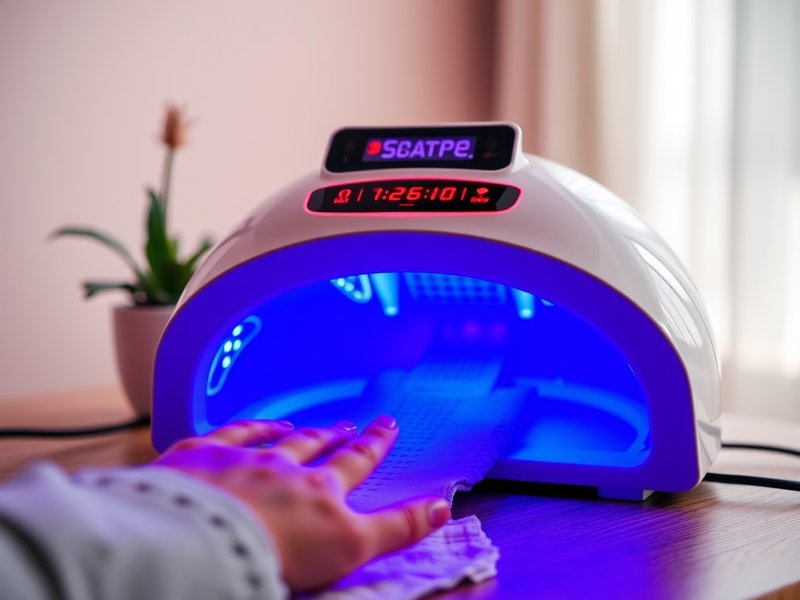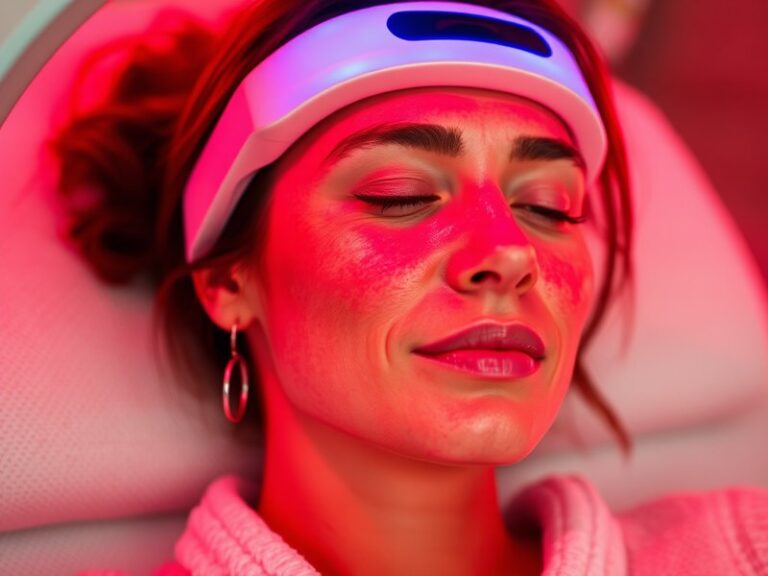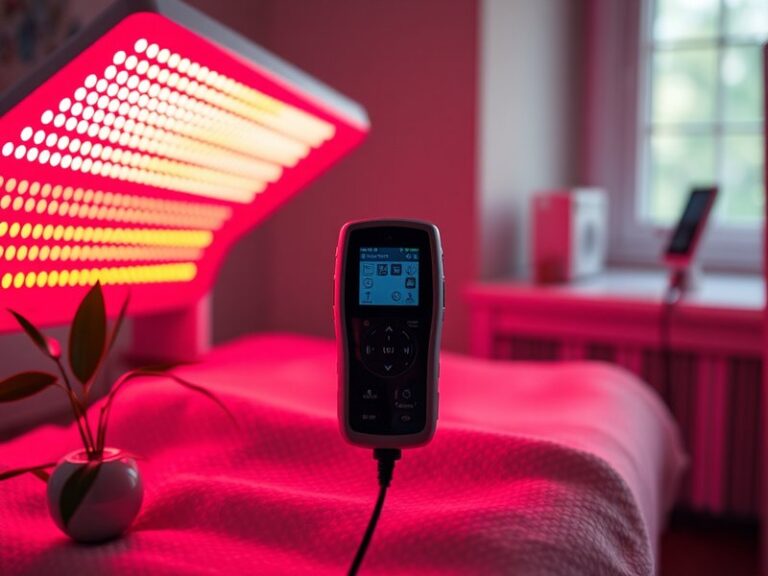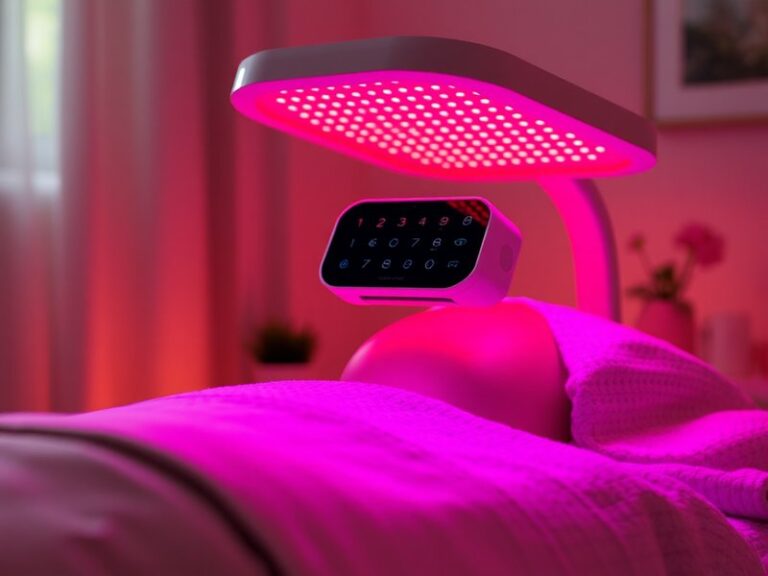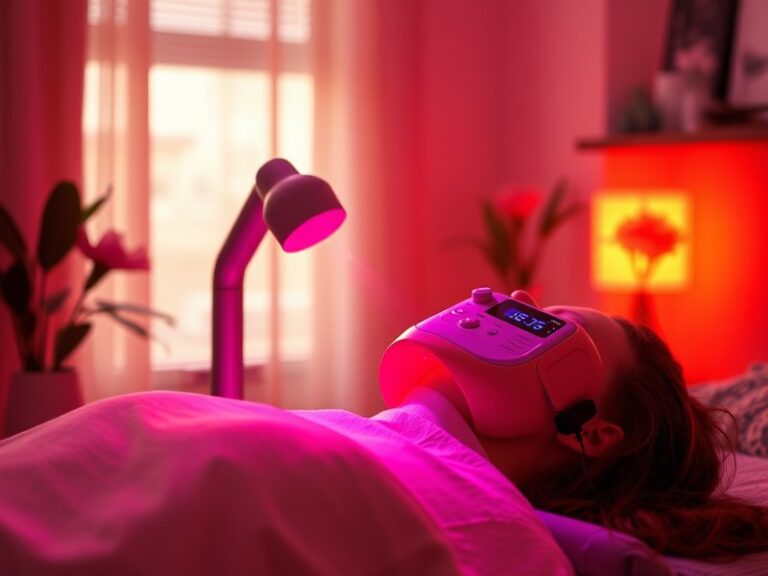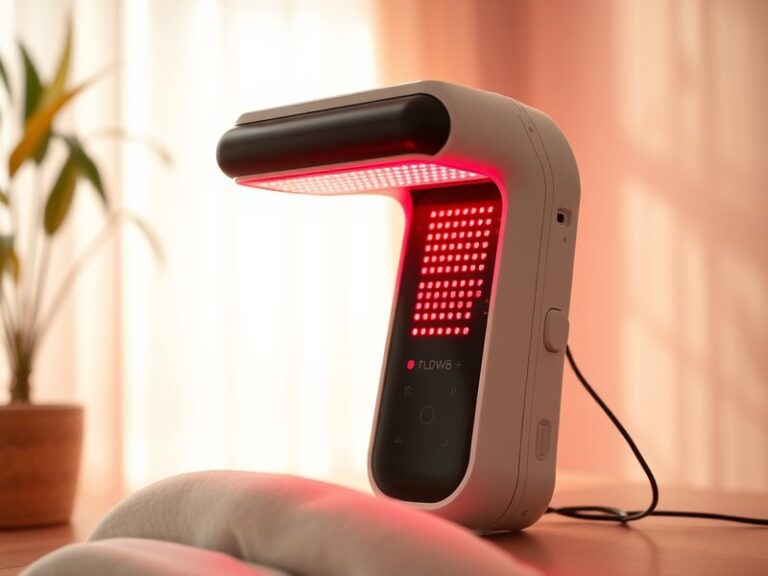Does Red Light Therapy Help Nail Fungus?
Does Red Light Therapy Help Nail Fungus?
Could a simple, non-invasive therapy hold the key to eradicating stubborn nail fungus?
In this article, we explore the efficacy of red light therapy (RLT) in treating nail fungus—a condition that can be both frustrating and embarrassing for many. We will cover how RLT works, its benefits and limitations, and whether it is a recommended treatment option for those plagued by nail fungal infections.
Key Takeaways
- Red light therapy shows promise as a treatment option for nail fungus due to its antimicrobial properties.
- While results can vary, some studies indicate significant improvement in nail health using RLT.
- Other treatment options exist, offering a range of methods for addressing nail fungus.
What is Red Light Therapy?
Red light therapy is a non-invasive treatment that uses low-level wavelengths of red light to stimulate cellular function. This therapy encourages healing and can be beneficial for various skin conditions.
RLT is thought to work by stimulating the mitochondria in cells, which boosts energy production and promotes healing. In the case of nail fungus, the therapy may help kill fungi and promote healthier nail growth.
How Does Red Light Therapy Work?
When applied to the affected area, red light penetrates the skin layers and reaches the nail bed. The light’s energy is absorbed by the cells, leading to enhanced blood circulation and increased cellular activity.
Research suggests that RLT may damage fungal cells and inhibit their growth, potentially leading to a decrease in infection severity and improvement in nail appearance.
What are the Benefits of Red Light Therapy?
Exploring the benefits of RLT can provide insights into why it is considered a viable option for treating nail fungus.
Discover the full analysis Does Red Light Therapy Help Jaundice?
Effective Antimicrobial Properties
Studies indicate that red light has antimicrobial effects on various pathogens, including fungi. This can help reduce the concentration of nail fungus over time.
Non-Invasive Treatment
One of the main advantages of RLT is that it is non-invasive, meaning it requires no surgery or needles. This attribute makes it accessible for many individuals who prefer to avoid more extreme measures.
Minimal Side Effects
When conducted under proper guidance, RLT generally has minimal side effects compared to traditional antifungal medications, which can sometimes lead to systemic reactions.
Potential for Enhanced Nail Growth
By promoting circulation and cellular activity, RLT may help not only kill the fungus but also encourage healthier nail growth as the infection clears.
Is it Possible to Treat Nail Fungus with Red Light Therapy?
The feasibility of using RLT for nail fungus treatment has gained interest in recent years. It is possible to integrate RLT into your regimen, but effectiveness can vary based on the severity of the infection and individual response to therapy.
What are the Advantages of Using Red Light Therapy?
The advantages of employing RLT for nail fungus treatments include convenience, safety, and the enhancement of overall nail health.
What are the Disadvantages of Using Red Light Therapy?
While there are many benefits, some disadvantages might exist. These include the potential for inconsistent results and the need for multiple sessions to see significant improvement.
What are the Things to Consider Before Trying Red Light Therapy?
Before diving into red light therapy for nail fungus, there are important considerations to keep in mind.
Consult a Healthcare Professional
Always consult a healthcare provider to determine if RLT is suitable for your specific case. They can help assess the severity of your fungal infection and guide you toward appropriate treatment.
Understand Treatment Protocols
Different devices and treatment protocols exist. Educating yourself about the recommendations for frequency and duration can maximize the therapy’s effectiveness.
Patience is Required
Realistically, RLT may take time to show results. Nail growth is slow, and complete treatment may require several weeks or even months.
Discover the full analysis How often can I do red light therapy on my face?
Consider Existing Treatments
Evaluate any current treatments you are using for nail fungus to avoid interactions and ensure you are not duplicating efforts.
What are the Alternatives to Red Light Therapy?
If RLT doesn’t appeal to you, several alternative treatment options for nail fungus are available.
Topical Antifungal Treatments
Over-the-counter topical antifungal creams and ointments can effectively treat mild cases of nail fungus. These products typically contain ingredients that directly attack the fungal cells.
Oral Antifungal Medications
For more severe cases, oral antifungal medications prescribed by a doctor may be necessary. These treatments target the fungus from within and can be more effective for extensive infections.
Laser Therapy
Similar to RLT, lasers can also be used specifically to target and kill fungal cells in the nails. Laser treatments are often performed in a medical setting and may demonstrate more immediate results.
Conclusion: Is it Recommended to Use Red Light Therapy for Nail Fungus?
Red light therapy presents a promising, non-invasive option for those seeking alternatives for nail fungus treatment. While many individuals may benefit from its potential antimicrobial properties and minimal side effects, results can vary, and multiple sessions may be needed. Consulting a healthcare professional and considering personal preferences will help determine the best course of action.
Frequently Asked Questions
Can red light therapy eliminate nail fungus completely?
While RLT has shown potential in reducing fungal infections, complete elimination may require consistent sessions and sometimes additional treatment methods.
How long does a red light therapy session usually last?
Typically, a session lasts between 10–30 minutes, depending on the device used and the treatment protocol recommended.
Is red light therapy safe for all individuals?
Generally, RLT is safe, but those with certain medical conditions or skin sensitivities should consult a healthcare provider before proceeding.
How often should I undergo red light therapy sessions?
The frequency can vary widely, but many recommendations suggest sessions 2-3 times a week for optimal results, depending on individual progress and severity of the condition.
Are there any at-home devices for red light therapy?
Yes, there are various at-home RLT devices available on the market. However, effective use and the type of device can influence results. It’s advisable to research and possibly consult a professional before purchasing one.
